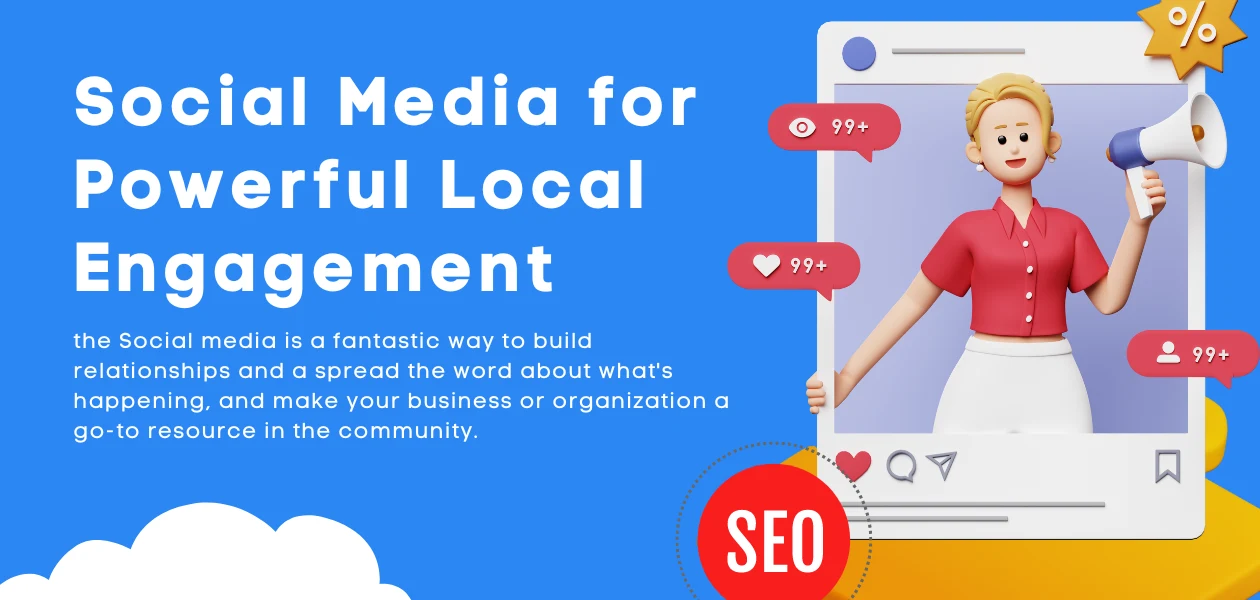Navigating local SEO feels like trying to read a map upside down, doesn’t it? You know it’s crucial for your business to be seen locally online, but how? Ready to get more local customers to find you online? I’m going to walk you through 10 tested strategies that boost visibility – from optimizing Google My Business to harnessing the power of reviews.
What are SEO Services & Why They Matter for Your Local Business
In today’s digital world, having a website is not enough to attract customers. Want customers in your neighborhood to find you online? That’s where SEO services come in. Think of it like this: They’ll make sure you show up when someone nearby needs exactly what you offer.
Imagine SEO as your secret weapon for getting your business seen by the right people online. With the right strategies, those searching for exactly what you offer will find you first. Imagine your website buzzing with new visitors, your inbox filling up with interested leads, and seeing those 5-star reviews roll in!
Local SEO Strategies: steps
- Optimize your Google My Business listing. (Thorough guide with emphasis on its importance.)
- Harness the power of local keywords. (Dedicated section on finding and using keywords.)
- Ensure your website is mobile-friendly. (Comprehensive mobile optimization instructions.)
- Craft location-focused content. (Multiple ideas beyond just blog posts.)
- Encourage positive customer reviews. (The step-by-step process addresses negative reviews.)
- Strategically build backlinks from other local websites. (Practical methods for acquiring backlinks.)
- List your business in relevant online directories. (The importance of directory listings is stressed.)
- Actively engage on social media with a local focus. (Focus on building community.)
- Track your local SEO performance to measure success. (Clear guide to monitoring performance.)
- Commit to consistent improvement for long-term results. (Stresses that SEO is an ongoing effort.
Key Takeaways
- GMB is your local SEO foundation.
- Know your ideal customer and their local search terms.
- Mobile-first design isn’t optional, it’s essential.
- Local content builds community AND boosts visibility.
- Reviews are powerful – encourage, respond, improve.
- Directories expand your digital footprint.
- Social media is about conversations, not just promotion.
- Track your performance to guide your strategy.
- Local SEO is an ongoing journey, not a one-time fix.
 Think of Google My Business as your digital storefront; it’s how local customers discover you.
Think of Google My Business as your digital storefront; it’s how local customers discover you.
Want customers to easily find you online? A well-managed Google My Business (GMB) listing is the key to getting your business noticed in your area. Think of it as your digital storefront on Google. When people search for businesses like yours nearby, a well-optimized GMB profile significantly boosts your chances of appearing prominently in both traditional search results and on Google Maps.
This increased visibility translates to more customers finding your business online. Your GMB profile saves customers time and hassle. They can get your hours, and phone number, and see what other people are saying about you – all in one place.
- Get found in local searches and on Google Maps: When people search for businesses like yours nearby, Google My Business (GMB) helps your listing appear prominently in both traditional search results and on Google Maps.
- Boost your online reputation: Customers often check your GMB profile before deciding whether to visit or contact you. A well-optimized profile builds trust and makes you the go-to choice in your area
- It’s free and easy: GMB is a powerful and completely free tool to put your business on the (digital) map.
Steps to Optimize Your Google My Business Listing
- Claim and Verify Your Listing:
- Search for your business on Google. You might find it already exists. If it does, claim it. If not, create a new listing.
- Verification is a . Google will usually send a postcard with a code to your business address.
- Complete Your Profile Thoroughly:
- Business Name: Use your exact, official business name. Don’t stuff in extra keywords here.
- Address: Make sure it’s accurate and formatted as your customers would expect to see it.
- Phone Number: Use a local number if possible; this signals to Google that you’re a local business.
- Website: Lead people directly to your site.
- Category: Choose the category that best represents your core business activity.
- Hours of Operation: Keep these up-to-date, especially around holidays!
- Write a Captivating Description:
- Let’s craft a message that tells your unique story!
- Include relevant keywords people might search for (but don’t overdo it).
- Add High-Quality Photos:
- Include photos of your storefront, your team, products, or services in action.
- Show off your storefront’s unique charm, your team’s friendly smiles, or your products in action – visuals like these make your business unforgettable.
- Engage with Reviews:
- Respond to all reviews–both positive and negative. Thank people for positive reviews, and address issues raised in negative reviews professionally.
- When people see glowing reviews, they’re way more likely to choose you – and that translates to higher search rankings.
Extra Tips:
- Google Posts: Use Google Posts within your GMB dashboard to share updates, offers, or events. It’s like a mini-blog directly in your listing.
- Messaging: Enable messaging so customers can contact you through your GMB profile.
- Use Insights: GMB offers data about how customers find and interact with your listing.
Harnessing the Power of Local Keywords for Improved SEO
If you want to attract more customers who are right in your area, local keywords are an absolute must-have in your website’s content. Here’s how to find the best ones and use them effectively:
1. Define Your Ideal Customer (and Their Location)
- Imagine your favorite customer walks through the door. How old are they?
- Focus on your city, surrounding towns, and even specific neighborhoods if those are important to your clientele.
2. Uncover the Right Local Keywords
- Brainstorm: Start with the basics – your services/products + your location (e.g., “landscaping services Dallas”). Then think about the problems your customers face that you can solve (e.g., “overgrown yard solutions Dallas”)
- Research tools: Explore tools like Google Keyword Planner or SEMrush for search volume in your area and related terms people use.
- “Near me” matters: Don’t forget those “near me” searches – those are high-intent searches from people ready to buy!
3. Weave Keywords into Your Content (But Do It Right!)
- Natural is best: Forceful keyword stuffing is a no-no for search engines and readers alike.. Focus on writing informative, helpful content and incorporate the keywords where they fit organically.
- Sprinkle your keywords strategically throughout your website.
4. Go Beyond the Basics
- Location pages: If you serve multiple communities, create pages dedicated to each location, optimized with their specific keywords.
- Blog posts: Write articles solving local problems or highlighting local events.
- Get listed: Ensure your business is on Google My Business, Yelp, and relevant local directories.
 Why Mobile Optimization is Crucial in Today’s World
Why Mobile Optimization is Crucial in Today’s World
With a huge percentage of internet searches conducted on smartphones, having a mobile-friendly website is no longer optional – it’s a must! A poorly optimized mobile site will lead to frustrated users, lost leads, and lower search engine rankings. Let’s now how to dive into how you can make your website shine on those smaller screens.
Steps for Mastering Mobile Website Optimization
- The Key is Responsive Design: Your website needs to automatically adjust its layout and content to fit any screen size, from desktops to tablets to smartphones. Responsive design provides a seamless experience for all visitors.
- Lightning-Fast Load Times: Nobody likes a slow website, especially on mobile. Here’s how to speed yours up:
- Optimize images: Reduce image file sizes without sacrificing quality.
- Minimize Code: Keep your HTML, CSS, and JavaScript streamlined.
- Consider a Content Delivery Network (CDN): stand for a CDNs distribute your website’s content across servers worldwide, making things load faster for users.
- Prioritize User Experience:
- Easy Navigation: Your menus should be clear, with simple, intuitive options.
- Finger-Friendly Buttons: Make sure buttons and links are large and spaced out enough for easy tapping.
- Readable Text: Use larger font sizes and avoid overcrowding text on the screen.
- Pop-ups with Care: Pop-ups can be disruptive on small screens. If you must use them, make sure they are designed responsibly and can be easily closed.
- Test, Test, Test! Use tools like Google’s Mobile-Friendly Test (https://search.google.com/test/mobile-friendly) to evaluate your site.
Additional Tips for Mobile Success
- Keep Forms Short and Sweet: Long forms can be a pain to complete on mobile. Ask for only essential information.
- Use Click-to-Call Buttons: Make it easy for visitors to get in touch directly from their phones.
- Think ‘Mobile-First’: With more searches on mobile, design your website primarily with smaller screens in mind.
Crafting Local Content That Strikes a Chord
Local content has the power to build a strong sense of community, attract new customers or viewers, and showcase the unique character of your area. Here’s how to make yours truly stand out:
Steps to Success
1.Know Your People:
- Who are they? Think about the age groups, interests, and needs of those you want to reach.
- Where start to hang out online? all are active on neighborhood Facebook groups, local news sites, or niche forums?
2. Pick Your Content Types:
- Neighborhood Guides: Share the inside scoop! focus on these beloved businesses, hidden gems, parks, or upcoming events.
- Local Event Coverage: Attend festivals, markets, or concerts. Get more tings Write reviews, capture photos, or interview attendees to share the experience.
- Customer Spotlights: Feature loyal customers, regulars at your business, or local figures. Tell their story and how they’re connected to the community and people.
3. Become a Keyword Sleuth:
- Tools: Use free options like Google Trends or paid services like Ahrefs to see what terms people in your area search for.
- Incorporate: Weave these keywords naturally into your content to boost search visibility.
4. Quality is King (or Queen):
- Write Well: Clear language, a bit of personality, and proofreading are crucial.
- Visuals Matter: Use your own photos, videos, or eye-catching local imagery.
- Ditch boring descriptions! Instead, show a customer’s problem solved through a short, relatable story.
5. Spread the Word:
- Your Channels: Share on your website, social media, email newsletters.
- Community Hubs: Post in relevant Facebook groups, online forums, and partner with local websites.
Extra Tips:
- Be Genuine: Let your passion for your community shine through.
- Collaborate: Team up with local businesses or influencers for wider reach.
- Consistency Counts: Regular fresh content keeps people coming back.
- Listen and Adapt: Pay attention to feedback. What does your audience love?
Getting Listed in Online Directories: A Step-by-Step Guide
Online directories are like vast digital phonebooks, and getting your business listed in the right ones can significantly boost your visibility. If you want customers to easily find you online
- Choose the Right Directories
- Major Players: Google My Business, Bing Places, Apple Maps Connect, Yelp, and Yahoo Local are the big names. Listing yourself here is essential.
- Niche Focus: Are you a bakery? A plumber? Seek out directories specific to your industry.
- Prep Your Business Info
- NAP is Key: Your business Name, Address, and Phone number (NAP) should be available at your fingertips.
- Also Include: Website address, business hours, a clear description of what you offer, and some appealing photos if allowed.
- Create Stellar Listings
- Consistency is Queen: Your NAP information MUST be identical across every directory. Thvital for search engines to link your listings together and boost your ranking.
- Keywords Matter: Weave in natural phrases people might search for (like “best vegan bakery Chicago”). Don’t force it — keep it readable!
- Reviews Win Trust: Encourage happy customers to leave reviews on your listings.
- Maintain and Monitor
- Stay Updated: Moved locations? Got a new website? Update every single listing as soon as changes occur.
- Engage: Respond professionally to reviews, even the negative ones.
Bonus Tips
- Social Media Boost: Cross-link your directory profiles from your website and social media pages.
- Track Your Progress: Some directories have analytics to show you how many people find you through them.
Remember, being present and accurate in online directories is a foundational part of ‘Local SEO‘, ensuring nearby customers can find you when they need your products or services.
 The Importance of Encouraging and Responding to Online Reviews
The Importance of Encouraging and Responding to Online Reviews
In today’s digital world, online reviews are like word-of-mouth recommendations on steroids. They hold immense power to influence potential customers. Here’s how to harness that power for your business:
Step 1: Proactively Encourage Positive Reviews
The Right Time Matters: Don’t hesitate to ask for reviews from happy customers. The best time is right after they’ve had a positive experience – a great meal, a successful transaction, or stellar customer service.
- Make It Effortless: Provide clear links to your review platforms (Google My Business, Yelp, industry-specific sites, etc.). Include these in email follow-ups, receipts, or even a friendly note tucked into a purchase.
- A Little Incentive Goes a Long Way: Consider a small discount or entry into a prize drawing for customers who leave reviews. Just make sure it complies with the review platform’s guidelines.
Step 2: Respond to Reviews with Thought and Care
Respond Promptly: Whether the review is positive or negative, a timely response shows you care about customer feedback. This is good for a building trust.
Positive Reviews:
- Express genuine gratitude.
- Briefly reinforce aspects of your business the customer highlighted.
- Consider inviting them back or sharing a promotion to foster loyalty.
Negative Reviews:
- Stay professional, even if the review feels unfair.
- Acknowledge their frustration and apologize sincerely.
- If possible, offer a solution or invite them to contact you directly to resolve the issue.
- Don’t let negative reviews discourage you – they offer opportunities to learn and improve.
Additional Tips
- Monitor Reviews Regularly: Set up alerts on your chosen platforms so you can address feedback quickly.
- Personalize When Possible: Using the customer’s name or referencing specifics from their review adds a genuine touch.
- Share Stellar Reviews: With the customer’s permission, feature great reviews on social media or your website!
Why This Matters
- Credibility: Positive reviews build trust among potential customers.
- SEO Boost: More reviews, especially with relevant keywords, can improve your search engine rankings.
- Valuable Insights: Reviews offer honest feedback on what you’re doing well and where you might improve.
Building Local Backlinks for Improved Search Visibility
Local backlinks are links from other websites within your community or region back to your own website. Local backlinks are like votes of confidence for your business online. They are tell Google that other websites in your community trust you, which can seriously boost your visibility in local searches.
Steps For Acquiring High-Quality Local Backlinks
Identify Relevant Opportunities:
Local Business Directories: Start by listing your business on a well-respected local directories. Examples include your Chamber of Commerce website, niche-specific industry directories, or even neighborhood association listings.
Local News and Blogs: Check if there are any popular news websites or blogs in your area. See if they would be interested in a story about your business or an interview where you offer your expertise.
Partnerships and Suppliers: Do you work with any other businesses in your area? Reach out to see if there are cross-promotion opportunities, potential collaborations, or if they’d link to your site on a partner or supplier page.
Tactics to Secure Backlinks
Guest Posting: Offer to write a valuable guest article for local blogs or websites focused on your industry. In exchange, you can usually include a natural link back to your website within the article or your author bio.
Community Sponsorship: Sponsor a local charity event, sports team, or community project. Often, this will result in a backlink from the organization’s website as a thank you to sponsors.
Become the Local Expert: Establish yourself as a thought-leader in your field within your community. This builds visibility and can lead to natural backlinks.
Important Considerations
- Quality over Quantity: It’s more important to get backlinks from reputable, relevant websites than lots of low-quality backlinks.
- Natural Links: The best backlinks look organic. Avoid spammy or forced link exchanges that could harm your search rankings.
- Relationship Building: Focus on building genuine connections within your local business community. This often leads to natural backlink opportunities.
 Social Media for Powerful Local Engagement
Social Media for Powerful Local Engagement
Want to really connect with the people in your town or city? the Social media is a fantastic way to build relationships and a spread the word about what’s happening, and make your business or organization a go-to resource in the community. Here’s how to do it effectively:
Step 1: Choose the Right Platforms
- Know your audience: Where do people in your area hang out online? If you’re targeting young adults, Instagram or TikTok might be good bets. Local moms and dads are likely to be on Facebook.
- Don’t spread yourself too thin: It’s better to be excellent on a couple of platforms than mediocre on many.
Step 2: Become a Local Resource
- Be the go-to source for local news: Share updates on road closures, major weather events, or changes in city services that impact people’s daily lives.
- Spotlight awesome events: Promote local festivals, farmers’ markets, concerts, and anything that adds vibrancy to your community.
- Promote local businesses: Share special offers, sales, or a ‘shout-out’ to a local shop doing great things. Think to a yourself as a cheerleader for your area!
Step 3: Make It a Conversation
- Ask questions: Get people talking! “Where’s your favorite place for coffee in town?” “What’s one thing you’d change about our park?”
- Respond to comments quickly: Shows you’re listening and involved. Thank those who share positive feedback, and address concerns respectfully.
- Encourage community content: Ask people to post photos of your city with a specific hashtag, and reshare the best ones to create a sense of shared experience.
Additional Tips
- Quality over quantity: A few well-written, engaging posts a week are better than daily fluff.
- Visually appealing: Use eye-catching photos, videos, and graphics to stand out.
- Mix it up: Don’t just promote – share interesting local stories, fun facts about your town, or even a “Throwback Thursday” historical photo.
Mastering Local SEO Performance Monitoring
If you want the best results from your local SEO efforts, monitoring your performance is vital. It helps you understand what’s working where you need improvement, and how to keep those local customers coming through the door. Here’s how to do it effectively:
Step 1: Your Essential Toolkit
- Google Analytics: This free and powerful platform is a must-have.
- Google Search Console: This complements Google Analytics with information directly from Google’s search engine.
- Local SEO-Specific Tools: Platforms like Moz Local, BrightLocal, or Semrush offer specialized features for tracking your local presence across search results and business listings.
Step 2: Metrics That Matter
Don’t get overwhelmed by all the data! Here’s where to focus:
- Website Traffic: Are more people visiting your site over time?
- Organic Traffic Sources: Is the traffic coming from search engines (Google, Bing, etc.) and specifically from local searches? (“plumber near me”)
- Keyword Rankings: Monitor target keywords relevant to your location and services. Are you moving up in the search results?
- Google Business Profile Insights: Track how often your profile appears in Maps results, clicks on directions or your website, and phone calls generated.
- Conversions: This is the ultimate goal! Are people completing valuable actions like filling out contact forms, making reservations, or (ideally) purchases?
Step 3: Get Regular With Reports and Analysis
- Set time aside: Weekly or monthly reviews are ideal.
- Look for patterns: What keywords bring in the most traffic? Which pages convert best? This tells you where to double-down your efforts.
- Don’t be afraid to experiment: SEO is an ongoing process.
Additional Tips
- Track your competitors: See where they’re strong and weak. Are there keywords they rank for that you should target?
- Customer reviews matter: Online reviews influence your local presence. Encourage positive reviews and respond to all feedback professionally.
Tracking your performance helps fine-tune your efforts for maximum visibility and success!
Conclusion
Ready to see your business shine in local search results? get a Start with these 10 strategies, and don’t give up! Consistent effort is the secret to long-term success in the ever-changing world of SEO.So, take the leap and watch your business thrive in the local market!
Optimizing your Google My Business Listing
Get found in local searches and on Google Maps: When people search for businesses like yours nearby, Google My Business (GMB) helps your listing appear prominently in both traditional search results and on Google Maps.
Get started with Google My Business (GMB). Here’s why claiming and optimizing your listing matters:
- Appear where people are searching: Show up in both search results AND Google Maps.
- Boost your online reputation: Build trust with a well-maintained GMB profile.
- It’s free and easy to use: Even if you’re not tech-savvy, GMB has simple tools to help.
Feeling intimidated by SEO? Download my plain-English guide to Local SEO.
FAQ: Your Local SEO Questions Answered
Q: My website gets some traffic, but I’m not seeing many customers from my area. What are a missing?
A: This is a common problem! Check these key areas:
Google My Business: Is your listing optimized with accurate info, keywords, and great photos?
Local Keywords: Are you using location-specific terms throughout your website and content? (e.g., not just “bakery” but “best bakery in [city name]”)
Directories: Are you listed on relevant local directories, not just the big ones?
Q: I’m a small business. Can I really compete against bigger companies in local search?
A: Absolutely! Local SEO often levels the playing field. Focus on:
Niche Expertise: Highlight what you do better than anyone else.
Amazing Reviews: Encourage happy customers to share their experiences.
Community Engagement: Become known as a helpful resource in your area, online and in-person.
Q: Mobile optimization sounds complicated. How important is it really?
A: It’s essential! More people search on their phones than on computers. Make sure your website is:
Loads lightning-fast: Test it on your own phone!
Is Easy to Navigate: Simple menus, large buttons
Looks Good on Small Screens: Test on different devices if you can.
Q: Creating local content feels overwhelming. Do I have to write blog posts in time?
A: Not at all! Here are other great options:
Customer Spotlights: Share short profiles with photos
“Best of” Lists: Round up your favorite local spots (this also builds relationships with other businesses)
Event Recaps: Share your photos and a brief write-up of a local festival
Q: I’m getting some reviews, but what do I do about the negative ones?
A: Don’t panic! Respond calmly, even if it feels unfair. Try to resolve the issue offline. Negative reviews, when handled well, show you care about customer service.
Q: Where should I focus first to see the biggest improvement?
A: This depends on your specific situation, but here’s a good starting point:
Claim and optimize your Google My Business listing. This is often the quickest way to boost visibility.
Do some keyword research. Find out what people in your area are searching for, and use those terms naturally.
Get listed in relevant local directories to build your online presence across the web.
